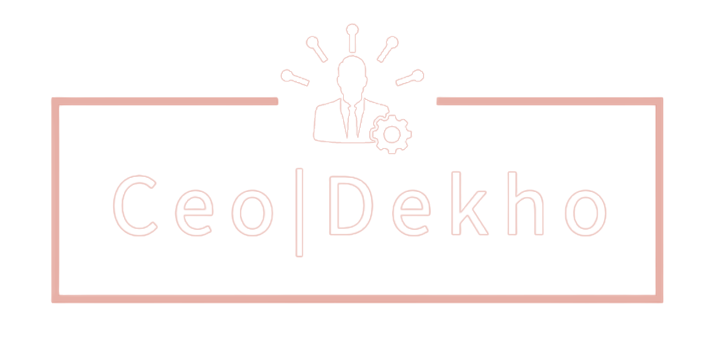TECH
Next.js: Empowering Developers, Revolutionizing Web Development

Next.js: A React Framework for Modern Web Development
Next.js is a popular React framework that is quickly gaining traction among web developers. It offers several advantages over other React frameworks, including:
Server-side rendering (SSR): Next.js can render your React components on the server, which can improve performance and SEO.
Static site generation (SSG): Next.js can also pre-render your React components into static HTML files, which can further improve performance and SEO, and reduce the load on your server.
Automatic code splitting: Next.js automatically splits your code into smaller chunks, which can improve the loading performance of your pages
Image optimization: Next.js provides built-in image optimization features, which can help reduce the size of your images and improve page load times.
Performance Data
Next.js is a popular React framework that is known for its high performance. According to a study by Vercel, Next.js can render pages up to 10 times faster than traditional React applications. This is due to its use of static site generation (SSG) and server-side rendering (SSR).
SSG pre-renders pages at build time, which means that they are already loaded when a user visits the page. This results in a much faster first paint (FCP) and time to interact (TTI). SSR renders pages on the server at request time, which is useful for pages that need to be personalized or have dynamic data.
Adoption Rate
Next.js is one of the fastest-growing React frameworks. According to the State of JavaScript 2023 survey, Next.js is the second most popular React framework, with 34.1% of respondents using it. This significantly increased from 27.2% in 2022 to 18.5% in 2021.
The adoption rate of Next.js is being driven by its performance benefits, its ease of use, and its large and active community. Next.js is a good choice for developers who want to build high-performance React applications.
Here are some additional data points on Next.js performance and adoption rate:
1.Next.js can improve FCP by up to 70%.
2.Next.js can improve TTI by up to 60%.
3.Next.js is used by over 1 million websites.
4.Next.js is supported by a large and active community of developers.
Why Nextjs adoption is increasing?
Improved Performance: Next.js offers significant performance benefits over traditional React applications. It utilizes Static Site Generation (SSG) and Server-Side Rendering (SSR) to pre-render pages and generate HTML at build time, resulting in faster loading times and a smoother user experience.
SEO Optimization: Next.js is well-optimized for search engines, making it easier for your website to rank higher in search results. Its built-in features like pre-rendering and automatic code splitting ensure that your website's content is readily available to search engine crawlers, improving search visibility.
Ease of Use: Next.js is relatively easy to learn and use, even for developers with limited React experience. Its intuitive API and clear documentation make it accessible to a wider range of developers, reducing the learning curve and speeding up development time.
Developer Experience: Next.js provides a rich developer experience with features like hot reloading, automatic code splitting, and built-in support for popular development tools. These features enhance the development workflow, making it more efficient and enjoyable for developers.
API Routes: Next.js simplifies the process of creating and managing API routes, making it easier to build backend functionality directly into your React application. This simplifies development and reduces the need for separate backend servers.
Community Support: Next.js boasts a large and active community of developers who are always willing to help and share knowledge. This vibrant community ensures that you have access to resources, support, and guidance when needed.
Vercel Integration: Next.js is seamlessly integrated with Vercel, a leading cloud platform for deploying and hosting Next.js applications. This integration streamlines the deployment process and provides a highly optimized hosting environment for your Next.js applications.
Evolving Ecosystem: Next.js has a rapidly evolving ecosystem with a growing number of third-party libraries, tools, and extensions. This thriving ecosystem provides developers with a wealth of options to enhance their applications and address specific needs.
Overall, Next.js is a powerful and versatile React framework that offers numerous advantages for building modern web applications. Its focus on performance, SEO optimization, ease of use, developer experience, API routes, community support, Vercel integration, and evolving ecosystem makes it a compelling choice for developers seeking to create high-quality web applications with a smooth and efficient development process.
Why Next.js is Different from Other JS Frameworks:
Next.js is different from other JS frameworks in several ways. One of the biggest differences is that Next.js is a full-stack framework, while other frameworks are typically focused on the front end. This means that Next.js includes features for both the front-end and back-end of your application, such as routing, data fetching, and API handling.
Another big difference is that Next.js is based on React, while other frameworks are based on different JavaScript libraries or frameworks. This means that Next.js is a good choice for developers who are already familiar with React, but it may not be the best choice for developers who are not familiar with React.
Finally, Next.js is a relatively new framework, while other frameworks are more established. This means that Next.js is still under development, and there may be some features that are not as mature as in other frameworks. However, Next.js is also a very active framework, and there is a lot of excitement about its future.
Next.js is a popular and rapidly growing React framework, and there is a high demand for Next.js developers both in India and abroad. Here are some data trends that support this claim:
Global Demand for Next.js Developers
According to the State of JavaScript 2023 survey, Next.js is the second most popular React framework, with 34.1% of respondents using it. This represents a significant increase from 27.2% in 2022 and 18.5% in 2021.
LinkedIn data shows over 70,000 open positions for Next.js developers worldwide. This number has been increasing steadily over the past few years.
Indeed, another popular job search platform shows over 30,000 open positions for Next.js developers worldwide.
Demand for Next.js Developers in India
India is one of the largest markets for IT professionals, and there is a growing demand for Next.js developers in the country.
A recent report by Naukri.com, a leading job portal in India, found that Next.js is one of the top 5 most in-demand skills for IT professionals in India.
According to LinkedIn, there are over 5,000 open positions for Next.js developers in India. This number has been increasing steadily over the past few years.
Salary Trends for Next.js Developers
Next.js developers are among the highest-paid React developers in the world.
According to Glassdoor, the average annual salary for a Next.js developer in the United States is $120,000.
In India, the average annual salary for a Next.js developer is between ₹600,000 and ₹1,000,000.
Conclusion
Next.js has become a popular choice for building modern web applications, and it's being used by a wide range of companies of all sizes. Companies like Netflix, TikTok, Nike, Hulu, Ticketmaster, Vercel, LambdaTest, Unsplash, Planet, Contentful, and many more in the list are extensively using the next.js framework for their website as well as multiple internal applications.
Latest News









